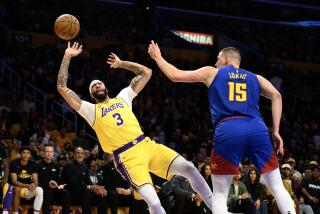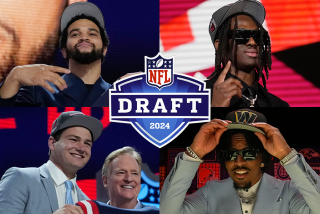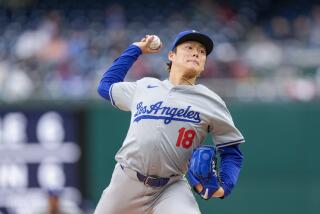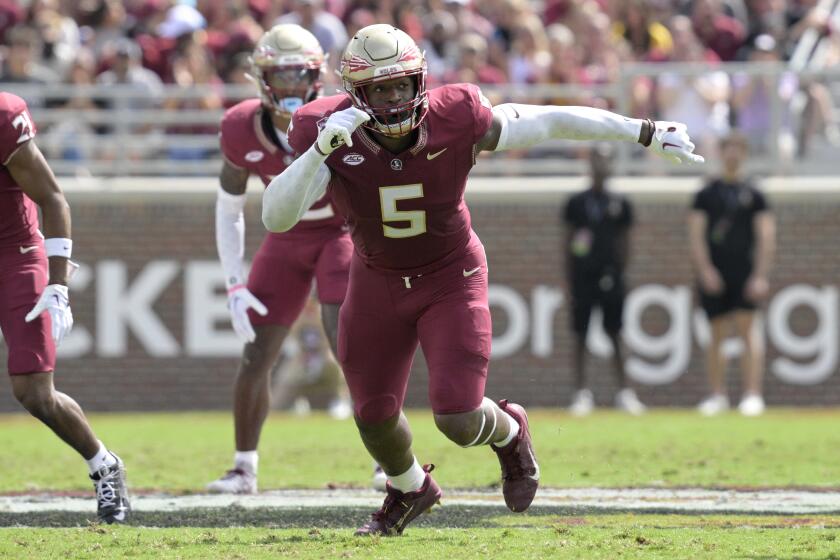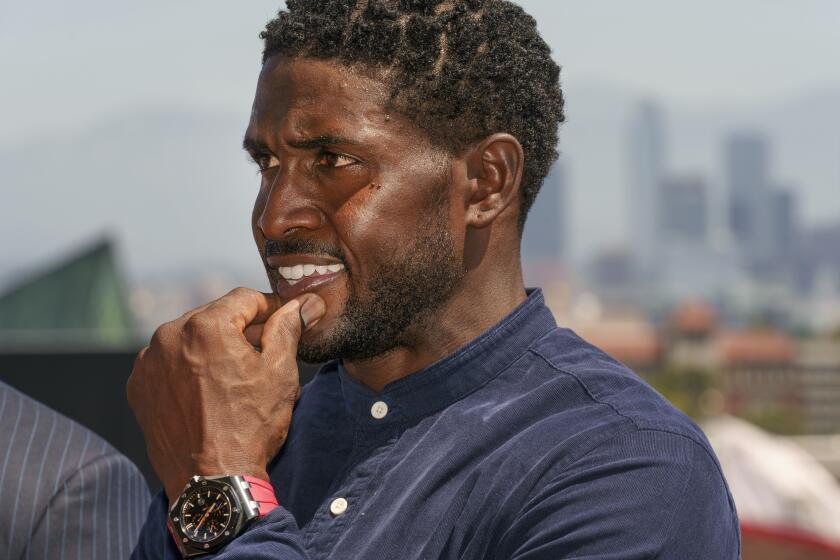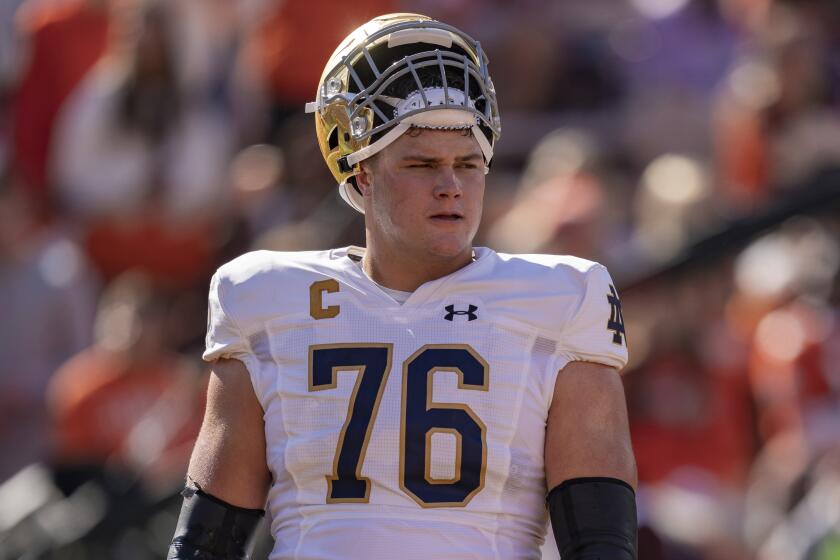It plays into Nadal’s game
NEW YORK -- It wasn’t supposed to be this tough.
Rafael Nadal’s forehand sailed wide. The scoreboard showed him behind, 3-2, in a first-set tiebreaker. The crowd stood, showering his opponent with love.
Then, suddenly, predictably, the way he has done all year when it counts, the Spaniard pushed to the next level. He powered a backhand that forced an error. He hit an ace. Sending fast, heavily spun balls flying toward his opponent, he drew two more errors.
Suddenly, the set was his. And with that, a match that looked as if it could have brought big trouble turned the way of the newly minted world No. 1, playing at the U.S. Open with the top seeding for the first time Monday.
In the end, after three sweaty hours, Nadal walked to the third round with a 7-6 (4), 6-3, 7-6 (4) victory over lowly, 136th-ranked Bjorn Phau. More important for how this tournament may unfold, this match underscored both Nadal’s strengths and perhaps a few chinks in his armor.
“I had some difficult moments,” Nadal said, looking relieved in a post-match news conference.
Understated, and true. There were parts of this match where Phau, a short German with a powerful one-handed backhand and uncommonly spry feet, looked like the dominant player.
Playing aggressively and consistently, he followed much of the script one needs to knock off Nadal. Phau popped aces, served hard and kept the Wimbledon champion pinned a few feet farther from the baseline than is ideal on a fast court.
Most tellingly for Nadal’s future opponents, Phau also kept a good majority of his ground strokes low, hard and flat. Those balls forced Nadal to bend lower than he likes, making him hit just below the strike zone, forcing unusual errors. On the red clay at the French Open final, where the ball bounced much higher, Nadal had only seven unforced errors. Monday, he had 35.
Nadal isn’t No. 1 in the world by accident.
More than any other player on tour, he finds a way to win. Monday, while Phau played as well as he can, Nadal used the rope-a-dope: sitting back, waiting for the right moment, then capitalizing. While the jet lag certainly didn’t do him any favors, it probably helped that the Wilson balls felt, in his words, “a little bit heavy.”
Official word from tournament officials is that the Wilson ball used in this year’s tournament is no different than it has been. But several players and coaches have told me otherwise.
“I’ve been coming here since 1978, and the ball at the U.S. Open has always been very light, the fastest ball on the tour by a mile,” said Larry Stefanki, coach of 11th-seeded Fernando Gonzalez, who won a silver medal in Beijing. “This year the ball is different. It’s very heavy. It hits the racket and it gives a thumping sound I haven’t heard here.”
And how will a heavier ball affect a guy like Nadal, who has never gone past the quarterfinals here?
The fast courts he usually struggles on will seem slower. He’ll feel more comfortable hitting full throttle. He’ll be able to strike balls late and still steer them in.
He’ll be able to find his rhythm, even in matches like Monday’s, which didn’t go quite as planned.
Said Stefanki: “These balls really favor the guy who loves 17-ball rallies.”
Rafa Nadal never met a 17-ball rally he didn’t love deeply. Like the guy needs any favors.
--
Kurt Streeter can be reached at kurt.streeter@latimes.com. To read previous columns by Streeter, go to latimes.com/streeter.
More to Read
Get our high school sports newsletter
Prep Rally is devoted to the SoCal high school sports experience, bringing you scores, stories and a behind-the-scenes look at what makes prep sports so popular.
You may occasionally receive promotional content from the Los Angeles Times.
